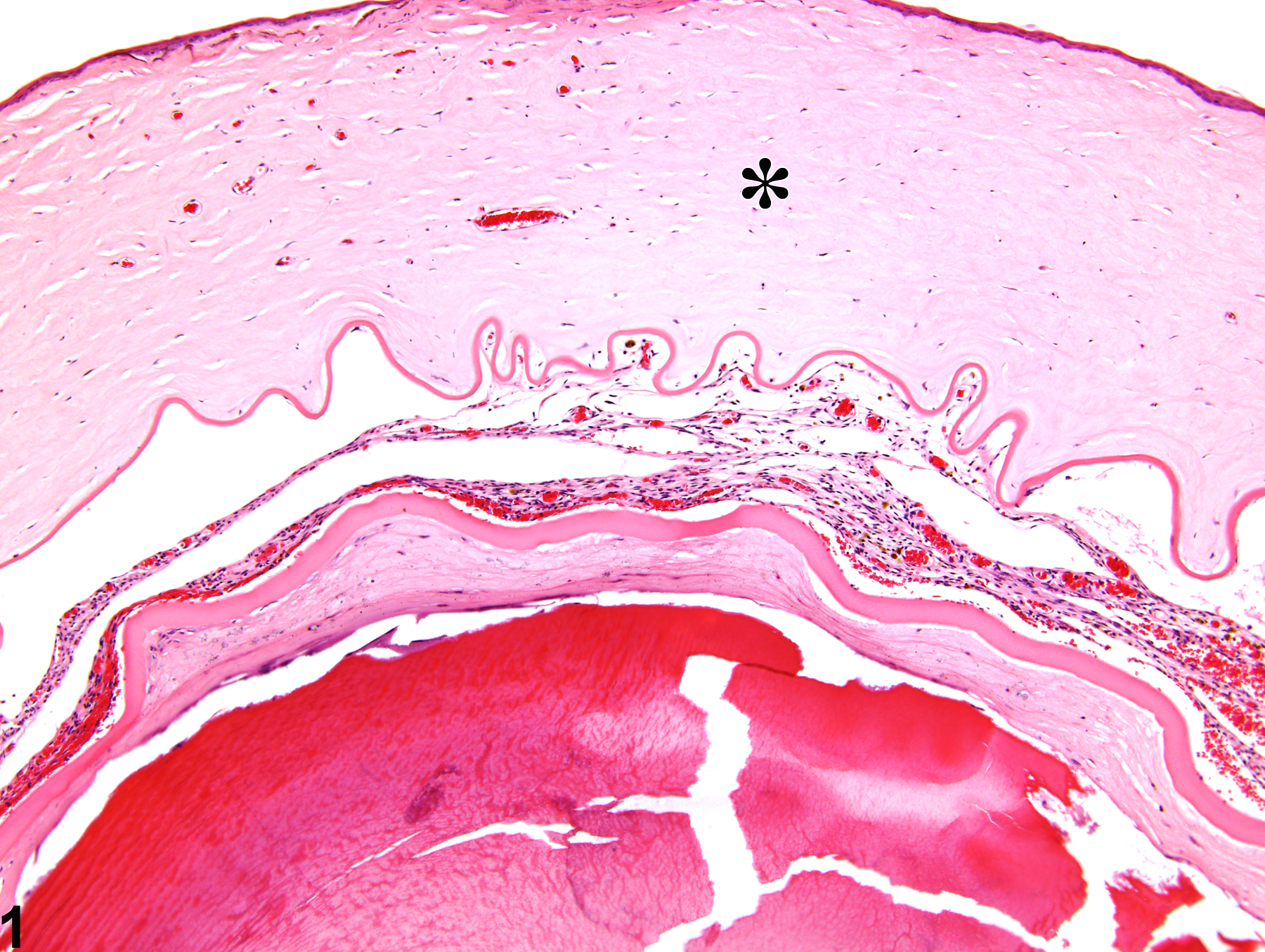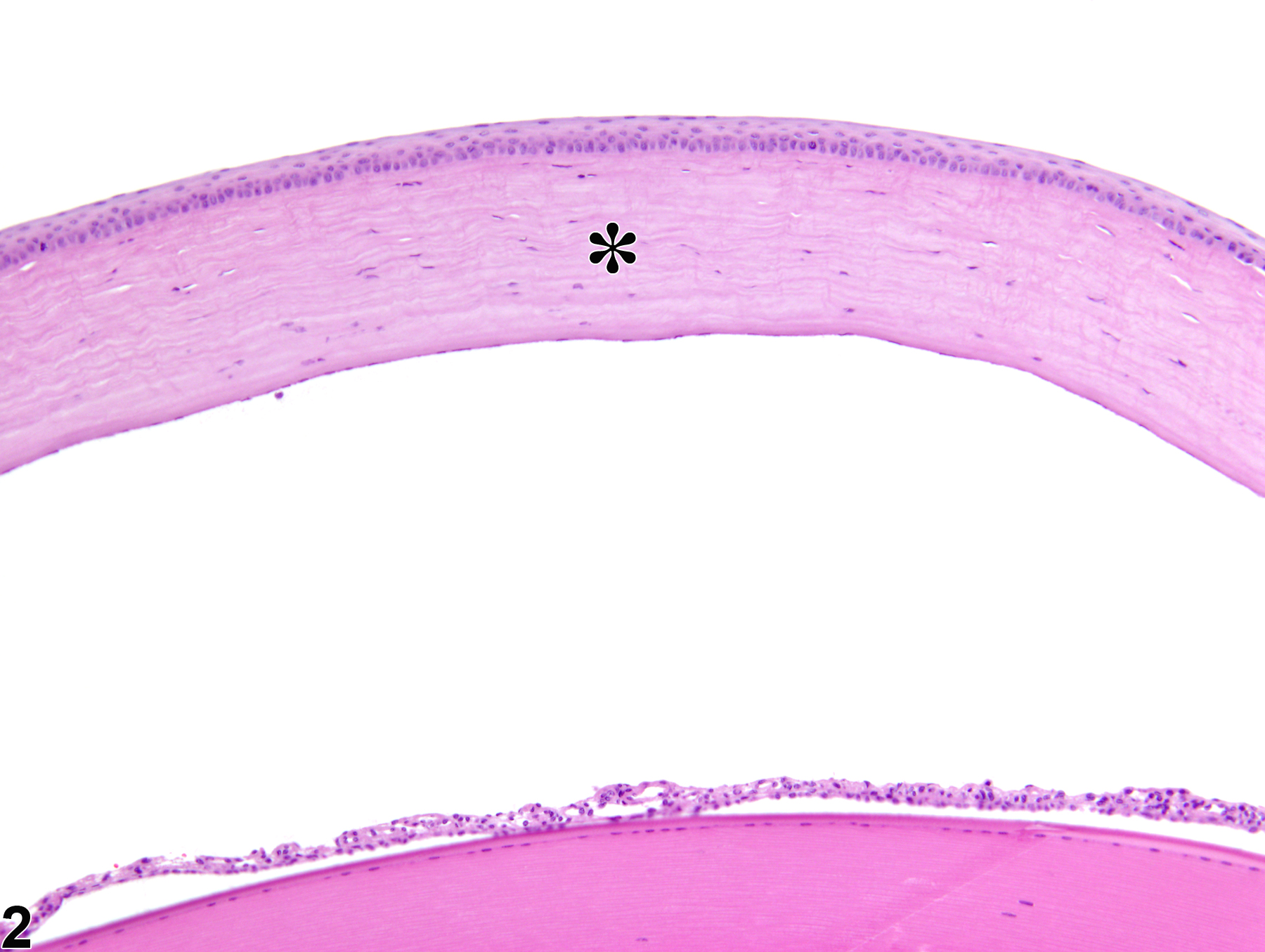Special Senses System
Eye, Cornea - Edema
Narrative
Behar-Cohen FF, Savoldelli M, Parel J-M, Goureau O, Thillaye-Goldenberg B, Courtois Y, Pouliquen Y, De Kozak Y. 1998. Reduction of corneal edema in endotoxin-induced uveitis after application of L-NAME as nitric oxide synthase inhibitor in rats by iontophoresis. Invest Ophthalmol Vis Sci 39:897-904.
Abstract: https://www.ncbi.nlm.nih.gov/pubmed/9579469Frame SR, Slone TW. 1966. Nonneoplastic and neoplastic changes in the eye. In: Pathobiology of the Aging Mouse, Vol 2 (Mohr U, Dungworth DL, Capen CC, Carlton WW, Sundberg JP, Ward JM, eds). ILSI Press, Washington, DC, 97-103.
Geiss V, Yoshitomi K. 1991. Eyes. In: Pathology of the Mouse: Reference and Atlas (Maronpot RR, Boorman GA, Gaul BW, eds). Cache River Press, Vienna, IL, 471-489.
Greaves P. 2007. Nervous system and special sense organs. In: Histopathology of Preclinical Toxicity Studies: Interpretation and Relevance in Drug Safety Evaluation, 3rd ed. Academic Press, San Diego, CA, 861-933.
Abstract: http://www.sciencedirect.com/science/book/9780444527714Greiling TMS, Clark JI. 2008. The transparent lens and cornea in the mouse and zebra fish eye. Semin Cell Dev Biol 19:94-99.
Full Text: https://www.ncbi.nlm.nih.gov/pmc/articles/PMC2674238/pdf/Maurer JK, Parker RD, Carr GJ. 1998. Ocular irritation: Microscopic changes occurring over time in the rat with surfactants of known irritancy. Toxicol Pathol 26:217-225.
Abstract: http://tpx.sagepub.com/content/26/2/217.shortNational Toxicology Program. 2001. NTP TR-501. Toxicology and Carcinogenesis Studies of p, p'-Dichlorodiphenyl Sulfone (CAS No. 80-07-9) in F344/N Rats and B6C3F1 Mice (Feed Studies). NTP, Research Triangle Park, NC.
Abstract: https://ntp.niehs.nih.gov/go/14880Smith RS, Sundberg JP, John SWM. 2002. The anterior segment. In: Systematic Evaluation of the Mouse Eye: Anatomy, Pathology, and Biomethods (Smith RS, John SWM, Nishina PM, Sundberg JP, eds). CRC Press, Boca Raton, FL, 111-159.
Yoshitomi K, Boorman GA. 1990. Eye and associated glands. In: Pathology of the Fischer Rat: Reference and Atlas (Boorman GA, Eustis SL, Elwell MR, Montgomery CA, MacKenzie WF, eds). Academic Press, San Diego, CA, 239-260.
Abstract: https://www.ncbi.nlm.nih.gov/nlmcatalog/9002563Yoshizuka M, Haramaki N, Yokoyama M, Hara K, Kawahara A, Umezu Y, Araki H, Mori N, Fujimoto S. 1991. Corneal edema induced by bis(tributytin) oxide. Arch Toxicol 65:651–655.
Abstract: https://www.ncbi.nlm.nih.gov/pubmed/1747064
Eye, Cornea - Edema in a female F344/N rat from a chronic study. Corneal edema (asterisk) is characterized by marked thickening of the corneal stroma due to accumulation of eosinophilic proteinaceous fluid



